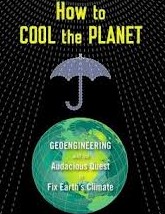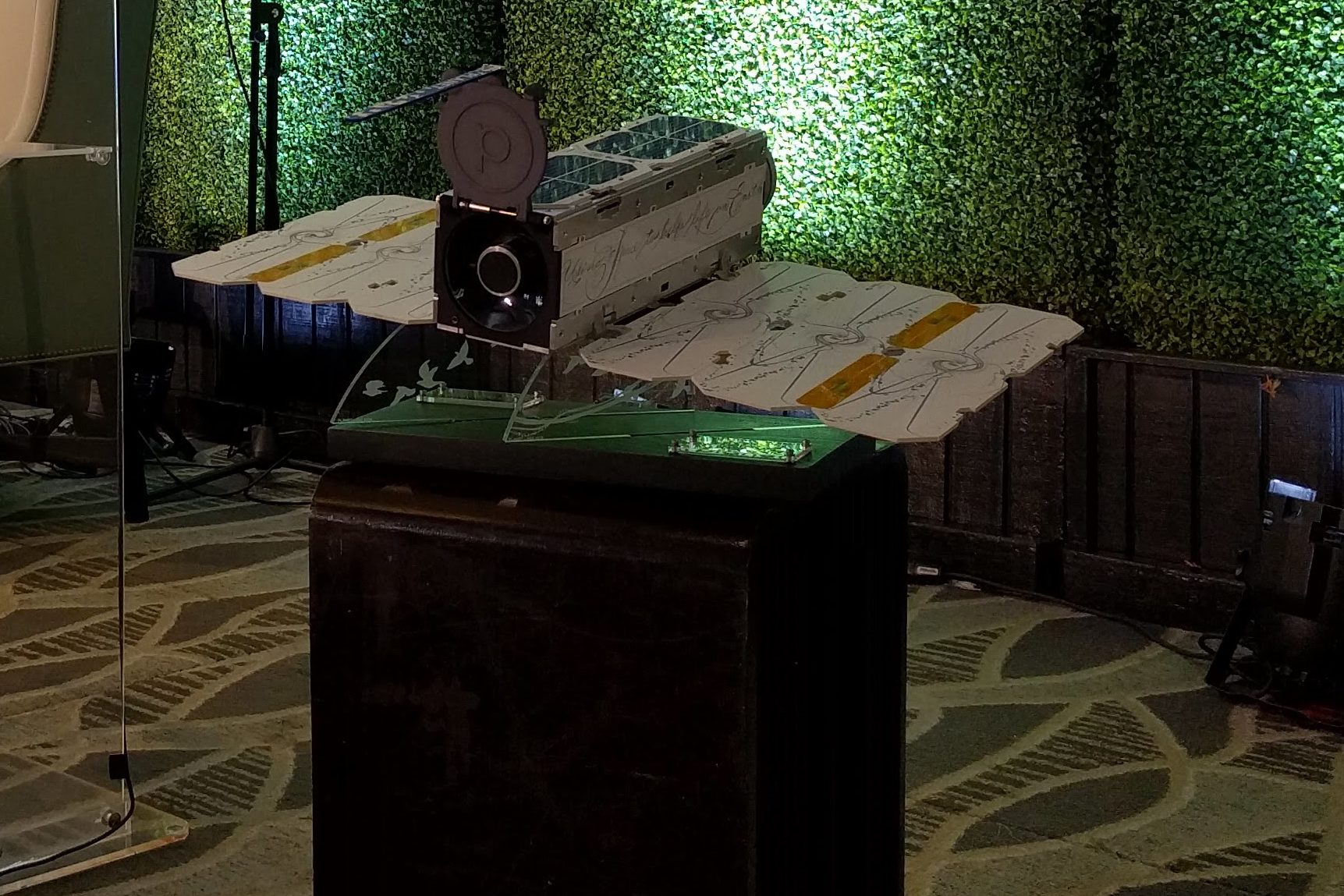Is geoengineering the ‘most powerful conservation tool created’ or the ‘most dangerous invention since the nuclear bomb’?
Jeff Goodell, the journalist and writer, explores these questions in his book How to Cool the Planet: Geoengineering and the Audacious Quest to Fix Earth’s Climate.
A Parasol for the Planet
On Monday night, at the Mountain View Center for the Performing Arts, Jeff Goodell gave a thought-provoking lecture on the ideas behind his book. As he sees it, the large scale fixing of the climate is like a ‘parasol for the planet’. He believes that reflecting sunshine away from the Earth is an effective and practical way of lowering the Earth’s temperature.
Hurricane Sandy was the tipping point that brought the reality of climate change home to the American population. But instead of action to reduce greenhouse gasses, the plan is to build storm barriers to protect New York in the future. Jeff sees that as typical of our response to climate change; adaptation rather than change.
Geoengineering is the ‘only answer’ to global warming that can have an effect in the short term. Jeff Goodell suggests that it will become a reality in the next 15 years or so. Our efforts to reduce emissions have not slowed down the steady rise in carbon dioxide in the atmosphere. The impacts of climate change are happening more quickly than expected, but burning coal is not going to stop soon.
 What is Geoengineering?
What is Geoengineering?
In 2008, a Dutch scientist named Paul Crutzen wrote a paper outlining this type of geoengineering. He proposed using airplanes to fire sulphur particles into the upper atmosphere. The particles reflect sunlight and reduce the heat reaching the Earth’s surface. Volcanoes show us how this works in reality… the 1991 eruption of Pinatubo threw masses of sulphur debris into the sky. And the Earth’s temperature was lowered by 1 degree F for a year.
Ken Caldeira, from Stanford University, uses computer modeling to predict the effect of geoengineering. His research shows that we only need to reflect back around 2% of sunlight to revert our temperature to pre-industrial levels. It only needs 5 grams of sulphur to offset 1 tonne of carbon.
Geoengineering is also a cheap method of combatting global warming. For instance, protecting the city of Venice with storm barriers cost $7 billion dollars. This amount could pay for 10 years of global geoengineering. The major cost is the jet planes needed to fire the sulphur into the atmosphere. Other methods such as carbon storage and carbon capture only have local effects and are far more expensive.
The Limitations of Geoengineeering
Big Oil and Big Coal love the idea of geoengineering! It means that we could continue to burn fossil fuels without increasing the temperature of our planet. But it’s not that simple.
- Geoengineering has no impact on ocean acidification
- Geoengineering does not stop air or water pollution
- Geoengineering has an unknown impact on the ozone hole
- Geoengineering does not conserve the planet’s resources for future generations.
The Politics of Geoengineering
The cost of geoengineering is low and there are currently no laws to regulate it. This means that single countries or even wealthy individuals could go it alone. But who decides the temperature to aim at? And using an untested, theoretical tool could result in global effects.
Politicians are scared to raise the issue. Who is willing to take the blame if something goes wrong? Environmentalists are likely to be against the concept, as it ignores so many of the impacts of global warming.
 Can Geoengineering be a Tool for Good?
Can Geoengineering be a Tool for Good?
Bill Gates believes that geoengineering can be a tool for good to improve the world’s climate. But as we are already ‘messing up’ the climate so badly, can we be trusted to re-engineer our climate?
At the moment, field tests are on hold as politicians and scientists debate the global issues. Jeff Goodell’s final comment…‘our greatest danger is not technological arrogance, but human apathy’.
What do you think?
Are we messing with things beyond our control?
Is a quick fix better than a slow move to sustainability?
Who can we trust to fire the first particles?








Loved your content Jane very well-written. I can’t simply go without leaving a comment. This post is a great read.
Why the talk about Geoengineering when Ecoengineering is a solution that is here now. In my work which is widely touted as the “largest geoengineeing project yet.” It is really ecoengineering, replenishing and restoring ocean plankton pastures. In this largest, most extensively, and intensively study ever of ocean plankton blooms we can say one thing for certain. IT JUST WORKS!
The results show clearly that anthropogenic CO2 is readily and beneficially captured and converted into ocean life. Billions of tonnes of CO2 could be converted to replenished and restored ocean pastures for mere millions not billions. This works rapidly and to great benefit of all ocean life. It will bring fish populations back and every other form of life in the seas. It works within days… What is needed is the replenishment of mineral micronutrients in the form of rock dust. Where hundreds of millions of tonnes of rock dust are disposed of in the oceans, beneficially placing mere hundreds of tonnes restores the ocean. Here’s a link to a post on why we can’t afford Geoengineers…https://russgeorge.net/2013/04/12/geoengineering-dreamers-david-keith/
Hey Russ, Thanks for the info on your fascinating work in eco-engineering. As I understand it, you are using volcanic dust to absorb carbon dioxide in the ocean and replenish the natural ecosystem too.
Let’s all work together to spread the word on the amazing efforts being made to slow down global warming.
Regards Jane
Jeff Goodell was kind enough to take the time to read this post. His comment via email ‘Thanks for posting that — excellent and concise summary!’.
Thanks to you too, Jeff, for a fascinating lecture.